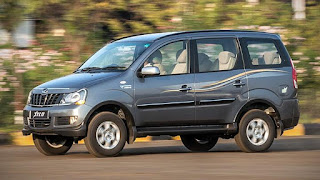TAXI SERVICE STRATEGY FORMULATION
TAXI SERVICE STRATEGY FORMULATION
We investigate taxi drivers’ service strategies from threeperspectives: 1) passenger-searching strategies; 2) passenger-delivery strategies; and 3) service-area preference. Forpassenger-searching strategies, we group drivers’ preferenceinto three possible behaviors, namely,hunting locally, waitinglocally, and going distant (i.e., traveling to a distant loca-tion). For passenger-delivery strategies, we study their averagepassenger-delivery speed, which potentially reflects the drivers’ability to choose clearer routes when delivering passengers. Forservice-area preference, we study their preference of serviceareas in a city. The overview of the taxi service strategies isillustrated in Fig. 6.In the following, we will first propose a method to identify ataxi driver’s initial intention right after dropping off the passen-gers. Based on the initially intended path, we then introduce amethod to extract the three types of taxi service strategies fromthe path. Finally, we will construct a driver–strategy matrix formining useful taxi service strategies. Navagraha Temple Package in Kumbakonam
Initial Intention IdentificationPassenger-searching strategies refer to taxi drivers’ behaviorsafter a drop-off event. However, a passenger-searching processmay consist of a series of decisions. When studying taxi drivers’behaviors after dropping off the passengers, we need to firstidentify a driver’s initial intended location, before which thetrace will be used for passenger-searching strategy extraction.It is difficult to tell the initial intention of a driver merelybased on his/her digital traces. Consider the trace in Fig. 1:After dropping off passengers at locationA, the driver startedto search for new passengers. He drove to locationC, where hewaited 10 min but failed to search passengers. Then, he decidedto go to locationB, where he succeeded in finding passengers.In this example, the final pickup location is not where thedriver initially intended to go right after the last drop-off event;otherwise, he would have followed the most efficient way tolocationB. Thus, locationCshould be the driver’s initial in-tention. If we simply extract the passenger-searching strategiesbased on the trace between the last drop-off location and thepickup location as that in our previous work [14], we wouldregard that the driver chooses a “local hunting” strategy (sincelocationsAandBare close) instead of his/her initial inten-tion, which is actually a “distant hunting” strategy (since loca-tionCis far from locationA). As we want to study a driver’sdecision at each drop-off location, we should investigate whatthe driver intended to do right after he dropped off passengersinstead of simply observing the final pickup location.We consider the longestnormaland nonwaiting trajectorystarting from the last drop-off event as the “initial intendedpath.” Here, a trajectorytfis a sequence of points〈p1,p2,...,pn〉, wherepiis a GPS reading (latitude, longitude) sam-pled during a passenger-searching or delivery process. For apassenger-searching trajectorytfwhose source location isS(where the corresponding drop-off event takes place), we firstcollect the passenger-delivery trajectories that either originatefrom or pass throughSto form a trajectory databaseT


https://srisivasakthitravels.com/
https://goo.gl/maps/1rNVoifRFQ9snSor6
We investigate taxi drivers’ service strategies from threeperspectives: 1) passenger-searching strategies; 2) passenger-delivery strategies; and 3) service-area preference. Forpassenger-searching strategies, we group drivers’ preferenceinto three possible behaviors, namely,hunting locally, waitinglocally, and going distant (i.e., traveling to a distant loca-tion). For passenger-delivery strategies, we study their averagepassenger-delivery speed, which potentially reflects the drivers’ability to choose clearer routes when delivering passengers. Forservice-area preference, we study their preference of serviceareas in a city. The overview of the taxi service strategies isillustrated in Fig. 6.In the following, we will first propose a method to identify ataxi driver’s initial intention right after dropping off the passen-gers. Based on the initially intended path, we then introduce amethod to extract the three types of taxi service strategies fromthe path. Finally, we will construct a driver–strategy matrix formining useful taxi service strategies. Navagraha Temple Package in Kumbakonam
Initial Intention IdentificationPassenger-searching strategies refer to taxi drivers’ behaviorsafter a drop-off event. However, a passenger-searching processmay consist of a series of decisions. When studying taxi drivers’behaviors after dropping off the passengers, we need to firstidentify a driver’s initial intended location, before which thetrace will be used for passenger-searching strategy extraction.It is difficult to tell the initial intention of a driver merelybased on his/her digital traces. Consider the trace in Fig. 1:After dropping off passengers at locationA, the driver startedto search for new passengers. He drove to locationC, where hewaited 10 min but failed to search passengers. Then, he decidedto go to locationB, where he succeeded in finding passengers.In this example, the final pickup location is not where thedriver initially intended to go right after the last drop-off event;otherwise, he would have followed the most efficient way tolocationB. Thus, locationCshould be the driver’s initial in-tention. If we simply extract the passenger-searching strategiesbased on the trace between the last drop-off location and thepickup location as that in our previous work [14], we wouldregard that the driver chooses a “local hunting” strategy (sincelocationsAandBare close) instead of his/her initial inten-tion, which is actually a “distant hunting” strategy (since loca-tionCis far from locationA). As we want to study a driver’sdecision at each drop-off location, we should investigate whatthe driver intended to do right after he dropped off passengersinstead of simply observing the final pickup location.We consider the longestnormaland nonwaiting trajectorystarting from the last drop-off event as the “initial intendedpath.” Here, a trajectorytfis a sequence of points〈p1,p2,...,pn〉, wherepiis a GPS reading (latitude, longitude) sam-pled during a passenger-searching or delivery process. For apassenger-searching trajectorytfwhose source location isS(where the corresponding drop-off event takes place), we firstcollect the passenger-delivery trajectories that either originatefrom or pass throughSto form a trajectory databaseT
https://srisivasakthitravels.com/
https://goo.gl/maps/1rNVoifRFQ9snSor6



Comments
Post a Comment